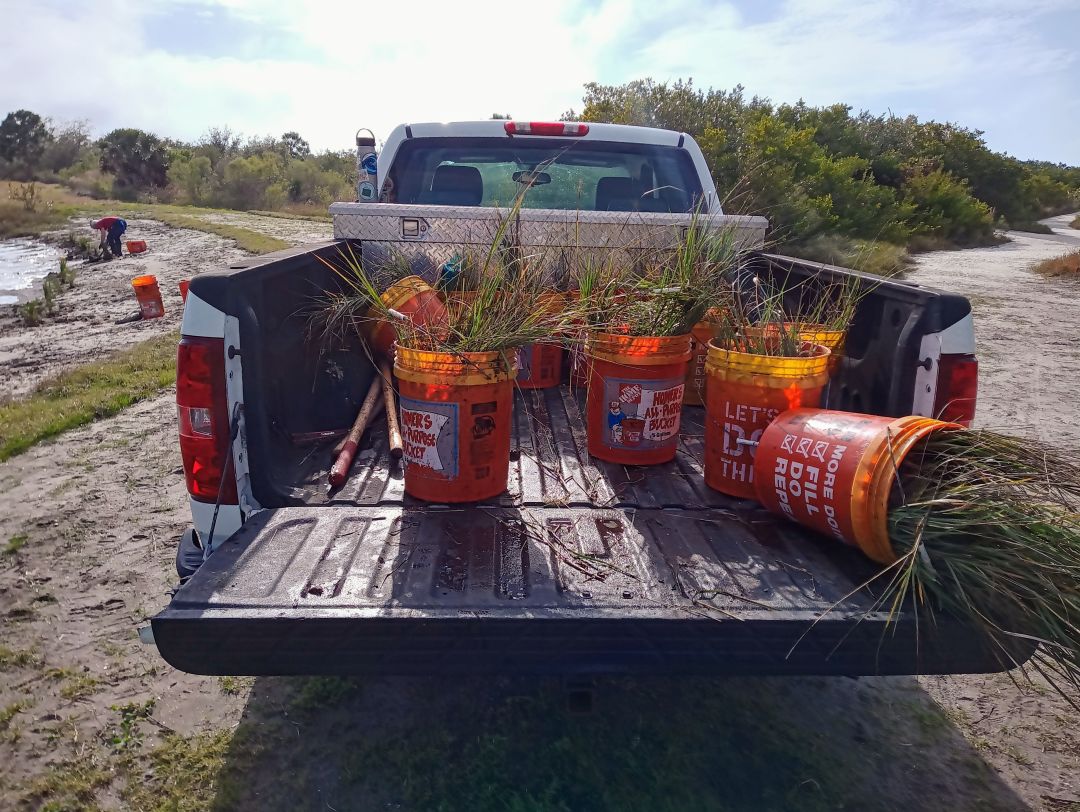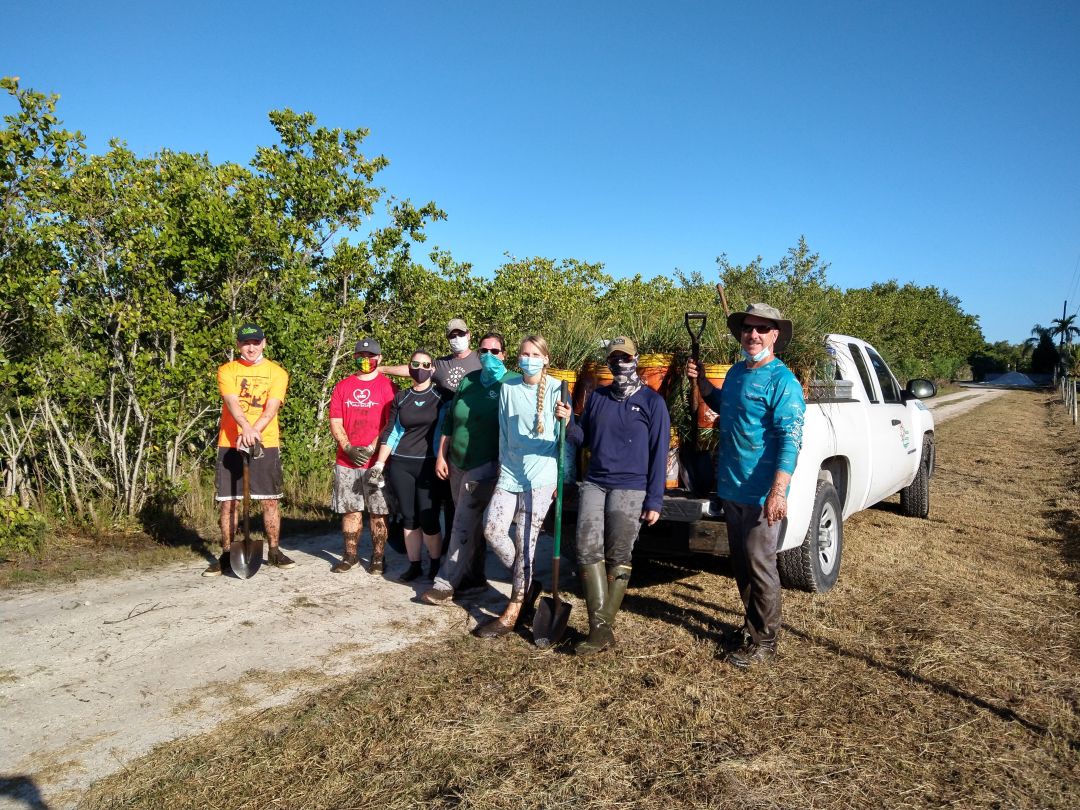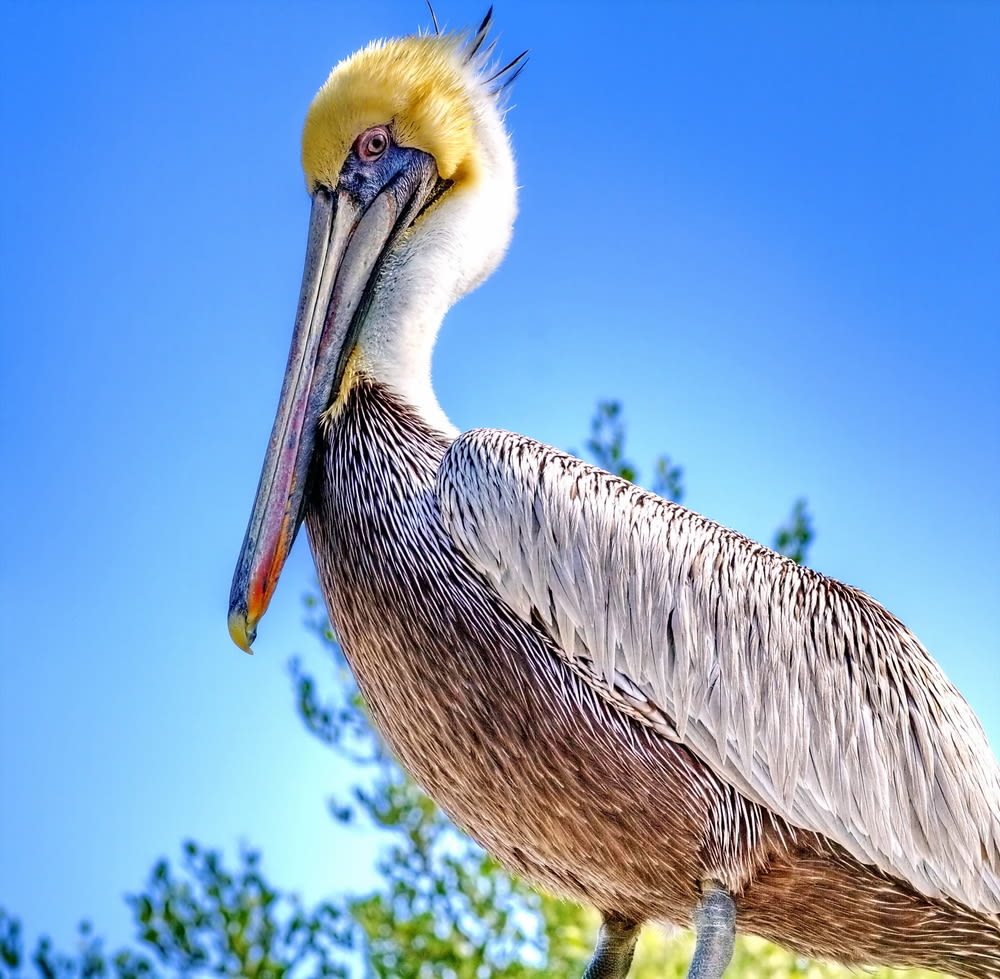Volunteers Work to Restore Salt Marsh Habitat at Robinson Preserve

Buckets of Spartina alternislora at Robinson Preserve.
Image: courtesy photo
At Robinson Preserve in northwest Bradenton, volunteers are wading into the water to plant Spartina alternislora, an essential salt marsh grass, in areas that are covered with water during high tide. The effort is part of an expansion at Robinson that began in 2012 with the donation of a 150-acre parcel to Manatee County from the Conservation Foundation of the Gulf Coast and a monetary pledge from the Mosaic Company Foundation for $3.2 million. Restoration of 135 acres of the property started last year, and, for months now, volunteers have been pitching in.
"We've been doing these volunteer days for months to preserve habitat for the birds and provide shelter for lots of other wildlife," says Manatee County Parks and Natural Resources coordinator Michelle Leahy. "There was old farmland overgrown with exotic and invasive plants, which didn't leave a habitat for wading birds."
The volunteer experience begins at the preserve's Valentine House, where about 30 buckets with 10 to 12 grass plantings each are set out. About 400 plants, which were established 10 years ago and nursed to their current state by previous volunteers, are taken out to manmade islands to be rooted. The clumps of grass are between two and four inches thick and are planted one foot apart. Leahy says the project has been successful so far; roughly 90 percent of the grasses that have been planted are thriving.

Volunteers at Robinson Preserve.
Image: Courtesy Photo
"These plants help with erosion control and keep the ground in place and rooted," says Leahy. "Because they are in tidal areas, the islands are underwater at high tide, but the tops of the plants are poking out. It's really interesting when you kayak over them."
According to the project manager Damon Moore, when completed, the 150 acres will be covered with oak and cedar hammocks, pine flatwoods, mangroves and oyster bars.
"Some areas will mature relatively quickly—for examples the marshes and oyster bars," says Moore. "Other areas will take a generation to mature, as oak and pine grow to full size over the next 25 to 100 years. This project gives back to the natural world while providing a wonderful experience for people to get outside."
Wildlife that will return are white pelicans (which are seasonal), smaller wading birds like plovers and killdeer. Several tiny crabs will also inhabit the surrounding water and sand, as well as small fish. You may also spot birds like roseate spoonbills or a roving raccoon.

Pelicans are seasonal birds found at the preserve.
Image: Shutterstock
The next volunteer event, scheduled for Thursday, June 10, has filled up, but Leahy can be contacted for private group events. The next volunteer shifts will take place from 8 a.m. to noon on Wednesday, July 14, and Monday, July 26.
"What makes this volunteer experience unique is that it's very tactile," says Leahy. "How often do you get to brag that you walked out to an island in the middle of a marsh to plant grass?"
Be prepared to get muddy. Hoses will help you wash off after wading. Wear clothes that can get wet, and prepare for some adventure.
To sign up for the replanting project, click here or email Michelle Leahy at [email protected].



